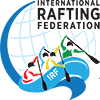International Rafting Federation Green Events Action Plan
By Ms. Hanieh Goharipour and Conservation Committee
The IRF’s aim is to ensure the sport of rafting is sustainable, and to do that we need to look at how our events are run. Events have an impact on the environment through:
- Direct resources (electricity, water, food, etc)
- Indirect (consumption of energy and creation of Co2 related to transport to the events, etc)
- The waste created immediately and on the longer term (dishes, equipment’s, paper, etc)
All these elements compose the ecological footprint of an event. Environmental considerations have to be taken into account before, during, and after the events.
- Before the event
Most of the ecological footprint reduction can be completed through good planning from the very beginning as that is when you set in stone the overall framework of the event. - During the event
During the event, the organizers need to make sure that the strategies agreed with the venues’ managers and other stakeholders are properly implemented. They will also need to assist attendees and participants in their own individual efforts to contribute to the event’s ecological footprint reduction. - After the event
Organizers will communicate the results to relevant people (venue’s managers, participants, etc).
It is important to take advantage of the efforts put into these event to spread the message that organising greener events is possible. Below is an Action Plan to help Event Organisers ensure their events are greener. Download a pdf version of the Green events action plan here.
| Green Events Action Plan Event Name: | ||
| Essential Actions | Applicable Event Details | Follow-Up Required |
| Reusable water bottles | – In the registration pack which every registered participant receives a reusable water bottle is included. Then in all areas where participants spend time there must be access to tanks of drinking water where they can refill their bottles at any time. | |
| Limit of one-use plastic around food | – Minimize or eliminate the use of disposables, by using re-usable dishes and cutlery. Ensure that dishwashing facilities are available. If disposables must be used, choose paper and other biodegradable products over plastic and Styrofoam. | |
| Recycle bins next to all rubbish bins | – Ensure there is a recycling container beside every garbage container on the site. Recycling containers should clearly identify acceptable materials (e.g. pop cans and plastic 1 & 2l bottles).
– Set up a collection of food scraps (fruit, vegetables, coffee grounds; NO dairy, meat, or fats) with each food vendor and in food prep areas. Five gallon food-grade buckets work well. Arrange with a local farmer to pick up the material and take it away for composting. – Post signs near food vendors and bins reminding people to “can” their trash. |
|
| Educate participants about green activity | – Have “Green Displays” at the event to help educate attendees about what they can do to help the environment. This is also a great opportunity to highlight your green activities.
– Have volunteers wear brightly-coloured shirts (i.e. a Green Team), mingle among the crowd with garbage and/or recycling bags to collect litter before it hits the ground. – Use hashtag #raftingisecosport for publishing pictures |
|
| Support local businesses | – Foster local production and supply of goods. Promote equity and fair trading relationships that will benefit to other communities both locally and globally, notably disadvantaged communities.
|
|
| Encourage river clean-ups | – Get schools and other groups involved in doing river clean-ups. Use the opportunity to educate them on river pollution = seas pollution. | |
Further information to support a Green Events Action Plan and sustainable rafting in general is available on our website:
- IRF Practical Guide to Sustainability
- IRF sustainability ideas for rafting event organisers
- IRF sustainability ideas for operators, instructors, guides and recreational rafters
#EcoRafting







